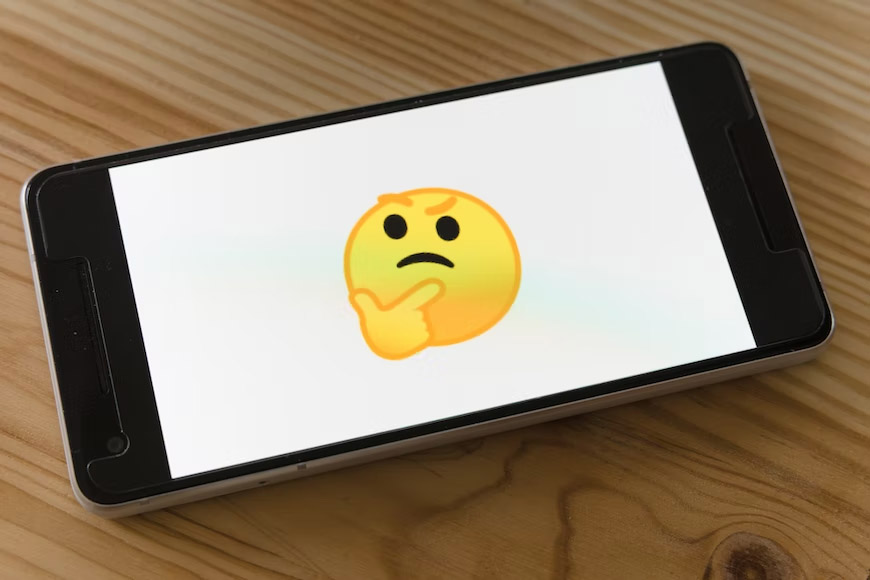A deep over analysis of the shortest passive-aggressive texts messages with the harshest of implications.
Passive-aggressive text messaging is a type of communication where the sender disguises their true feelings or intentions through indirect, ambiguous, or sarcastic language.
The messages are often meant to convey disapproval, frustration, or anger. But instead of expressing these feelings openly, the sender chooses to do so in a subtle or manipulative way.
One medium where you can find and express passive-aggressive messages is through texting and online messaging.
Texting and online messaging inherently strips out the emotional clues present in face-to-face or verbal communication, which by and large, drives people to find new ways to assert sentiment into and ascertain sentiment from the medium.
As a result, things like punctuation and emoji have taken on new and crucial roles in language. They also drive us insane as we overthink and overanalyze to try to squeeze out meaning from such minuscule and ambiguous indicators.
11 most passive-aggressive texts and what they really mean
Because texting and online messaging removes the tone and intent of your message, it’s up to the receiver to interpret the meaning of your words, which can sometimes lead to misunderstandings and miscommunication.
Here are my picks for the 11 most passive-aggressive text messages on earth. Everyone, put on your overthinking caps as we’ll also dive into their meanings!
11 | We’ll figure it out
“We’ll figure it out” is an effective way to end a debate and move on. And sure, it means you’re not happy with what the other person is proposing, but rather than say that, you’re just tabling things until later. Maybe by then the other person’s stance will change.
Additionally, using “we’ll figure it out” is another method to avoid taking responsibility or making a decision at the moment. It’s a delaying tactic to a difficult conversation or decision without committing to anything specific.
10 | That’s fine / Fine / I’m fine
Anything that’s passive-aggressive in real life is equally passive-aggressive — if not more so — in texting! And since “I’m fine” is the quintessential example of a passive-aggressive phase, its connotations transcend all mediums.

9 | Yeah / Yea
“Yeah” is not the more definitive “Yes.” While it may seem innocuous, the word choice implies a level of reluctance, indicating that the sender may not be fully on board with whatever is being proposed.
Additionally, “Yeah” implies some degree of hesitancy. Not necessarily a ton of hesitancy, which is why it’s only ranked ninth, but certainly some.
8 | Can you give me a call?
Translation: You’re not getting the job done via text, so we have to do this on the phone like cavemen. This text is particularly irritating too, since the entire reason we all text is to avoid having to make phone calls.
Aside from that, this request can also be interpreted as a power move. Of course, they have the means to call you, but some people just like to assert their dominance in the conversation by forcing you to switch to their preferred mode of communication.
7 | Hello?
“Hello?” is a classic example of passive aggression in text messages because it’s meant to convey annoyance or frustration without directly addressing the issue. It’s the exasperated-but-trying-to-play-it-kind-of-cool message of someone ghosted and/or annoyed.
You know it’s passive-aggressive because your knee-jerk response to “Hello?” is probably “Sorry, I was [fill in lie here].” That should put out any beef the other person has on us, especially if the reason we provided is more pressing.
6 | [Just a single emoji]
A single emoji is passive aggressive in a different way than much of the rest of this list. It’s not necessarily an expression of anger, annoyance, or exasperation — more of a readiness to end the conversation.
It doesn’t invite a reply. (Other than a reply of a single emoji or the word “haha,” both of which also are conversation closers.) It sums up the person’s sentiment in one graphic and that’s that. Move on.

5 | [After a long delay] Anyway..
Dueling passive aggressiveness! You stopped responding to a person’s texts for some reason. You were ready to move on, you were annoyed, you prioritized something else.
Regardless of the reason, you sent a loaded message by saying nothing at all — and now you’ve received an equally loaded message back.
4 | Sure
“Sure” is an even worse version of “fine,” which in and of itself is a worse version of “yeppers,” which is a worse version of “of course,” which is a worse version of “boy howdy,” which is a worse version of “yes.”
3 | [Three dots appearing for a while then just disappearing with no message sent]
The three dots typing indicator are made to let you know that the other guy on the other side is still online. However, its meaning took a different form, probably because of expecting a reply that didn’t come. And that hits hard.
Oooh do I hate when I’m in a conversation with some stakes, I see the three dots, and then suddenly they’re gone and there’s no message.
Just a brutal way to imply that they’re not happy with you, not willing to continue talking it out right now, or you’re unimportant.
2 | Ok / K / OK
Pretty much the worst message you can receive. If you were ever to print out the logs of the near decade of texts between my wife and me, this exchange would occur with the highest frequency:
Her: K
Me: Mad?
She always claims she’s not, although eventually I think I did start to make her mad by always asking. It’s a vicious cycle.

1 | [Any of the above ending with a period.]
Punctuation has taken on a whole new role in language thanks to texting. Look at the difference between these three texts:
Ok
Ok.
Ok!
Those are three completely different sentiments. The first one is probably passive aggressive, but the second one is definitively and jarringly so. Meanwhile, the third one has zero passive aggressiveness and conveys a sentiment 100 percent different.
Exclamation points, the scourge of the writing world, are now among the most crucial tools to express even a modestly genuine tone. Meanwhile, the period is a conversation crushing punch to the gut. So if you end a short text with a period, just know you’ve ruined someone’s day.